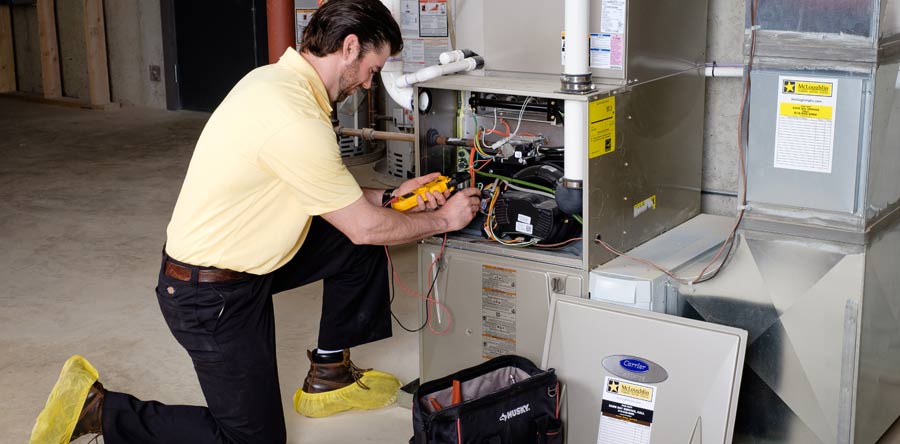
Your indoor air is circulated over the heat exchanger, warming it to be re-circulated back to your conditioned indoor living areas. Heat Exchanger: The heat exchanger is a critical part of your gas furnace.While there is not an industry-wide standard checklist for gas furnace maintenance, your HVAC contractor may examine the following critical gas furnace components during their annual maintenance visit:
#FURNACE MAINTENANCE PROFESSIONAL#
To make sure your heating system is ready for those cold winter nights, a licensed professional HVAC technician should inspect your central heating system.

Routine maintenance by a licensed, professional heating contractor may extend the life of your gas furnace and possibly prevent minor issues from turning into expensive or significant problems over time. You don’t want to walk in the door to a frigid home on the coldest night of the year! Louis area heating and cooling company.Is your gas furnace ready to keep your home warm and cozy - ALL WINTER LONG? Don’t be trapped under a pile of blankets this season! Be sure your heating system and insulation are in tip-top shape.įor season-long dependability, you may want to have your gas furnace inspected by a licensed professional heating contractor before the first cold snap. If you have any questions about this annual furnace maintenance checklist, or if you’d like a heating system serviced or installed in your home, contact Jerry Kelly, your St. That’s why your technician will check and/or change the air filter that’s installed in your unit. If your air filter is dirty, it will restrict airflow to your unit and cause your furnace to work harder than it needs to. This can be a very serious health risk, which makes this one of the most important parts of annual furnace maintenance. If there are any cracks in your furnace’s heat exchanger it can cause your furnace to produce toxic carbon monoxide gas. Carbon Monoxide is an odorless, colorless, and toxic gas that is a byproduct of incomplete combustion. Its job is to contain a fire, transmit the fire’s heat to your home, and vent the toxic exhaust gasses and by-products to the outdoors without harming you or your family. Your heat exchanger is designed as a barrier. That’s why your technician will check the condition of all of the gas connections in your system and address any problems or safety hazards. But anytime gas is used in your home, it must be done so in a controlled and safe manner. Most furnaces get their energy from natural gas, which is an excellent source of fuel. This will help him or she identify any problems in the way your furnace operates.


To check the controls of your furnace, your technician will observe your unit as it cycles from on to operating to off. Loose connections could pose a safety hazard to your home. For your furnace to function properly, all of its electrical connections must be tight and in working order. Your technician will make sure that everything is in working order. Since it has the responsibility of telling your system when to shut on and off, it’s important that it is set and functioning properly. Your thermostat is the part of your furnace that you come into contact with most often. Annual furnace maintenance checklist: 7 crucial tasks So read on for a look into some of the most important parts of a technician’s annual furnace maintenance checklist. Today we want to give you a better idea of what exactly is involved in a furnace tune-up and how each step specifically helps your furnace. In our blog earlier this week we talked about why now is the perfect time of year to schedule a furnace tune-up and how it can help your heating system.


 0 kommentar(er)
0 kommentar(er)
